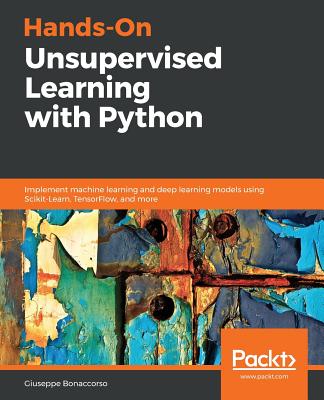Machine and Deep Learning Algorithms and Applications
暫譯: 機器學習與深度學習演算法及應用
Shanthamallu, Uday Shankar, Spanias, Andreas
- 出版商: Morgan & Claypool
- 出版日期: 2021-12-22
- 售價: $1,840
- 貴賓價: 9.5 折 $1,748
- 語言: 英文
- 頁數: 123
- 裝訂: Quality Paper - also called trade paper
- ISBN: 1636392652
- ISBN-13: 9781636392653
-
相關分類:
Machine Learning
海外代購書籍(需單獨結帳)
相關主題
商品描述
This book introduces basic machine learning concepts and applications for a broad audience that includes students, faculty, and industry practitioners. We begin by describing how machine learning provides capabilities to computers and embedded systems to learn from data. A typical machine learning algorithm involves training, and generally the performance of a machine learning model improves with more training data. Deep learning is a sub-area of machine learning that involves extensive use of layers of artificial neural networks typically trained on massive amounts of data. Machine and deep learning methods are often used in contemporary data science tasks to address the growing data sets and detect, cluster, and classify data patterns. Although machine learning commercial interest has grown relatively recently, the roots of machine learning go back to decades ago. We note that nearly all organizations, including industry, government, defense, and health, are using machine learning to address a variety of needs and applications.
The machine learning paradigms presented can be broadly divided into the following three categories: supervised learning, unsupervised learning, and semi-supervised learning. Supervised learning algorithms focus on learning a mapping function, and they are trained with supervision on labeled data. Supervised learning is further sub-divided into classification and regression algorithms. Unsupervised learning typically does not have access to ground truth, and often the goal is to learn or uncover the hidden pattern in the data. Through semi-supervised learning, one can effectively utilize a large volume of unlabeled data and a limited amount of labeled data to improve machine learning model performances. Deep learning and neural networks are also covered in this book. Deep neural networks have attracted a lot of interest during the last ten years due to the availability of graphics processing units (GPU) computational power, big data, and new software platforms. They have strong capabilities in terms of learning complex mapping functions for different types of data. We organize the book as follows. The book starts by introducing concepts in supervised, unsupervised, and semi-supervised learning. Several algorithms and their inner workings are presented within these three categories. We then continue with a brief introduction to artificial neural network algorithms and their properties. In addition, we cover an array of applications and provide extensive bibliography. The book ends with a summary of the key machine learning concepts.
商品描述(中文翻譯)
這本書介紹了基本的機器學習概念和應用,適合包括學生、教職員和業界從業人員在內的廣泛讀者群。我們首先描述機器學習如何使計算機和嵌入式系統能夠從數據中學習。典型的機器學習算法涉及訓練,通常機器學習模型的性能會隨著訓練數據的增加而改善。深度學習是機器學習的一個子領域,涉及大量使用人工神經網絡的層,這些神經網絡通常是在大量數據上進行訓練的。機器學習和深度學習方法通常用於當代數據科學任務,以應對不斷增長的數據集,並檢測、聚類和分類數據模式。儘管機器學習的商業興趣相對最近才增長,但機器學習的根源可以追溯到幾十年前。我們注意到,幾乎所有組織,包括工業、政府、國防和健康領域,都在使用機器學習來滿足各種需求和應用。
本書介紹的機器學習範式可以大致分為以下三類:監督學習、非監督學習和半監督學習。監督學習算法專注於學習映射函數,並在標記數據上進行監督訓練。監督學習進一步細分為分類和回歸算法。非監督學習通常無法訪問真實標準,目標通常是學習或揭示數據中的隱藏模式。通過半監督學習,可以有效利用大量未標記數據和有限的標記數據來改善機器學習模型的性能。本書還涵蓋了深度學習和神經網絡。由於圖形處理單元(GPU)計算能力的可用性、大數據和新軟件平台,深度神經網絡在過去十年中引起了廣泛的關注。它們在學習不同類型數據的複雜映射函數方面具有強大的能力。我們將本書組織如下:本書首先介紹監督學習、非監督學習和半監督學習的概念。在這三個類別中介紹了幾種算法及其內部運作。然後,我們繼續簡要介紹人工神經網絡算法及其特性。此外,我們涵蓋了一系列應用並提供了廣泛的參考文獻。本書最後總結了關鍵的機器學習概念。











